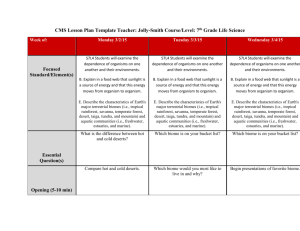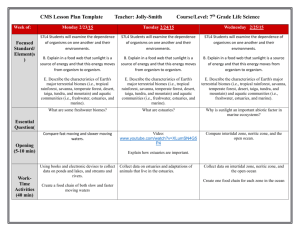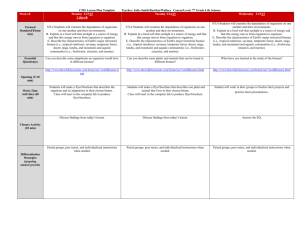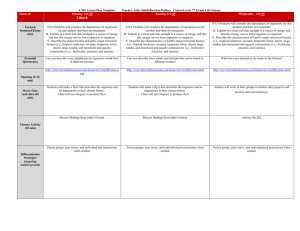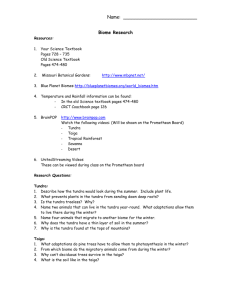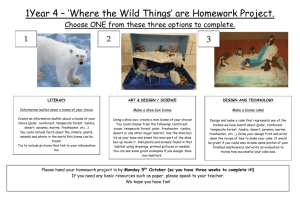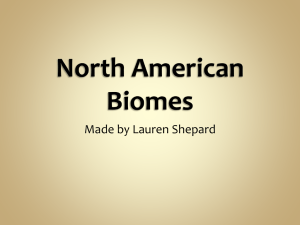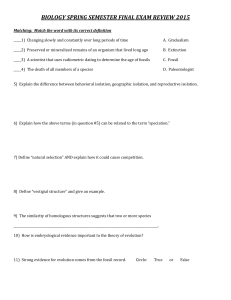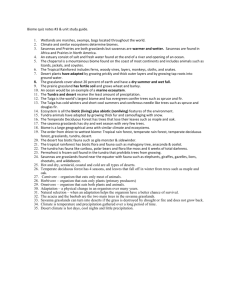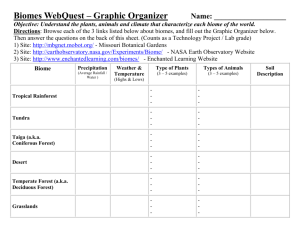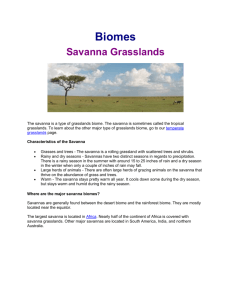Lesson Plans
advertisement
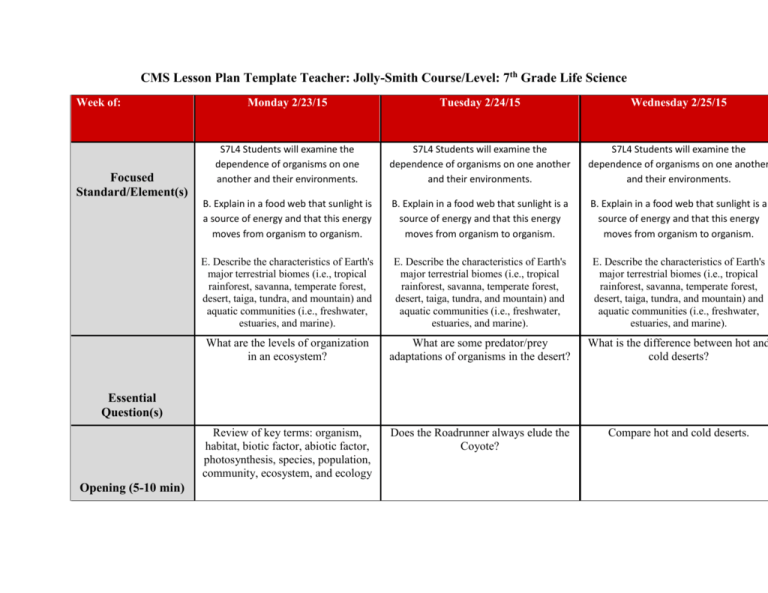
CMS Lesson Plan Template Teacher: Jolly-Smith Course/Level: 7th Grade Life Science Week of: Focused Standard/Element(s) Monday 2/23/15 Tuesday 2/24/15 Wednesday 2/25/15 S7L4 Students will examine the dependence of organisms on one another and their environments. S7L4 Students will examine the dependence of organisms on one another and their environments. S7L4 Students will examine the dependence of organisms on one another and their environments. B. Explain in a food web that sunlight is a source of energy and that this energy moves from organism to organism. B. Explain in a food web that sunlight is a source of energy and that this energy moves from organism to organism. B. Explain in a food web that sunlight is a source of energy and that this energy moves from organism to organism. E. Describe the characteristics of Earth's major terrestrial biomes (i.e., tropical rainforest, savanna, temperate forest, desert, taiga, tundra, and mountain) and aquatic communities (i.e., freshwater, estuaries, and marine). E. Describe the characteristics of Earth's major terrestrial biomes (i.e., tropical rainforest, savanna, temperate forest, desert, taiga, tundra, and mountain) and aquatic communities (i.e., freshwater, estuaries, and marine). E. Describe the characteristics of Earth's major terrestrial biomes (i.e., tropical rainforest, savanna, temperate forest, desert, taiga, tundra, and mountain) and aquatic communities (i.e., freshwater, estuaries, and marine). What are the levels of organization in an ecosystem? What are some predator/prey adaptations of organisms in the desert? What is the difference between hot and cold deserts? Review of key terms: organism, habitat, biotic factor, abiotic factor, photosynthesis, species, population, community, ecosystem, and ecology Does the Roadrunner always elude the Coyote? Compare hot and cold deserts. Essential Question(s) Opening (5-10 min) Section 1 assessment pg. 678 Research the following website for predator/prey adaptations for desert organisms. Brain Pop Video on the types of desert and quiz www.desertusa.com Work-Time Activities (40 min) Discussion of assessment 1 answers Answer the EQ Discuss EQ Paired groups, peer tutors, and individualized instructions when needed. Paired groups, peer tutors, and individualized instructions when needed. Paired groups, peer tutors, and individualized instructions when needed. Closure Activity (10 min) Differentiation Strategies (targeting student growth) Focused Standard/Element(s) Essential Question(s) Thursday 2/26/15 Friday 2/27/15 S7L4 Students will examine the dependence of organisms on one another and their environments. S7L4 Students will examine the dependence of organisms on one another and their environments. B. Explain in a food web that sunlight is a source of energy and that this energy moves from organism to organism. B. Explain in a food web that sunlight is a source of energy and that this energy moves from organism to organism. E. Describe the characteristics of Earth's major terrestrial biomes (i.e., tropical rainforest, savanna, temperate forest, desert, taiga, tundra, and mountain) and aquatic communities (i.e., freshwater, estuaries, and marine). E. Describe the characteristics of Earth's major terrestrial biomes (i.e., tropical rainforest, savanna, temperate forest, desert, taiga, tundra, and mountain) and aquatic communities (i.e., freshwater, estuaries, and marine). Which biome is on your bucket list? Which biome is on your bucket list? Additional Notes Which biome would you most like to live in and why? Begin presentations of favorite biome. Choose a biome that you would like to live in and describe the biome and explain why you would like to live there. Present your bucket list biome. Opening (5-10 min) Work-Time Activities (40 min) Discuss the EQ, Closure Activity (10 min) Paired groups, peer tutors, and individualized instructions when needed. Differentiation Strategies (targeting student growth) Paired groups, peer tutors, and individualized instructions when needed.
